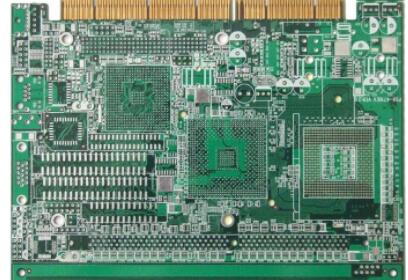In the production of electronic products,PCB and IC are important components. However, many friends think that the two are the same thing, and they are not clear about the specific concepts of the two. The difference and relationship between the two are still There are cognitive misunderstandings. Shenya will take you to understand the role and difference of these two major components.
PCB (Printed Circuit Board) is an important electronic component, a support for electronic components, and a carrier for electrical interconnection of electronic components. Because it is made by electronic printing, it is called a "printed" circuit board, also known as a printed circuit board. Almost every kind of electronic equipment, from electronic watches, calculators, to computers, communication electronic equipment, military weapon systems, as long as there are electronic components such as integrated circuits, in order to make the electrical interconnection between the various components must be printed plate.
The earliest printed circuit boards used paper-based copper-clad printed boards. Since the emergence of semiconductor transistors in the 1950s, the demand for printed boards has risen sharply. In particular, the rapid development and wide application of integrated circuits have made the volume of electronic equipment smaller and smaller, and the density and difficulty of circuit wiring have become greater and greater, which requires continuous updating of printed boards. At present, the variety of printed boards has developed from single-sided boards to double-sided boards, multilayer boards and flexible boards; structure and quality have also developed to ultra-high density, miniaturization and high reliability; new design methods, design supplies and Board-making materials and board-making techniques continue to emerge. Today's printed circuit boards are mainly composed of circuits and pictures, dielectric layers, solder resist ink, silk screen, and surface treatment.
From the appearance point of view, the background color of the PCB is usually green, but it is not limited to green. The background color of this layer mainly depends on the color of the solder mask used in the solder mask. A screen printing surface is also printed on the solder mask, usually with text and symbols on it to identify the position of the part.
The main advantages of using printed circuit boards as components are as follows:

1. High density
Over the years, the high density of printed boards has been able to develop correspondingly with the improvement of integrated circuit integration and the advancement of mounting technology.
2. High reliability
Through a series of inspections, tests and aging tests and other technical means, the PCB can be guaranteed to work reliably for a long time (usually 20 years).
3. Designability
The requirements for various properties of PCB (electrical, physical, chemical, mechanical, etc.) can be achieved through design standardization and standardization. In this way, the design time is short and the efficiency is high.
4. Manufacturability
PCB adopts modern management, which can realize standardization, scale (quantity) and automatic production, so as to ensure the consistency of product quality.
5. Testability
A relatively complete test method and test standard have been established. Various test equipment and instruments can be used to detect and appraise the eligibility and service life of PCB products.
6. Assemblability
PCB products are not only convenient for standardized assembly of various components, but also for automated and large-scale mass production. In addition, by assembling the PCB and various other components as a whole, larger parts and systems can be formed to the complete machine.
7. Maintainability
Since PCB products and various components are assembled in a standardized design and large-scale production, these components are also standardized. Therefore, once the system fails, it can be replaced quickly, conveniently and flexibly, and the system can be quickly restored to work.
PCB has other advantages, such as miniaturization and light weight of the system, high-speed signal transmission, reduction of wiring and assembly errors, easy circuit interchange, miniaturization of electronic equipment, and mechanization and automation of equipment production.
IC (Integrated Circuit)
Integrated circuit (integrated circuit) is a kind of miniature electronic device or component. A certain process is adopted to interconnect the transistors, resistors, capacitors and inductors and other components and wiring required in a circuit together, fabricate on a small or several small semiconductor wafers or dielectric substrates, and then package them in a package, It has become a micro structure with the required circuit functions; all of the components have been structured as a whole, making electronic components a big step towards micro miniaturization, low power consumption, intelligence and high reliability. It is represented by the letter "IC" in the circuit. The inventors of integrated circuits are Jack Kilby (integrated circuits based on germanium (Ge)) and Robert Noyth (integrated circuits based on silicon (Si)). Most applications in today's semiconductor industry are silicon-based integrated circuits.
The relationship between PCB and IC
I believe that after understanding the specific concepts and features of PCB and IC, everyone has a better grasp of the difference between the two. In fact, an integrated circuit is a collective that integrates multiple components, and a printed circuit board is a replaceable surface component. a. Therefore, the integrated circuit is an integrated chip soldered on the PCB, and the PCB is also the carrier of the integrated circuit.